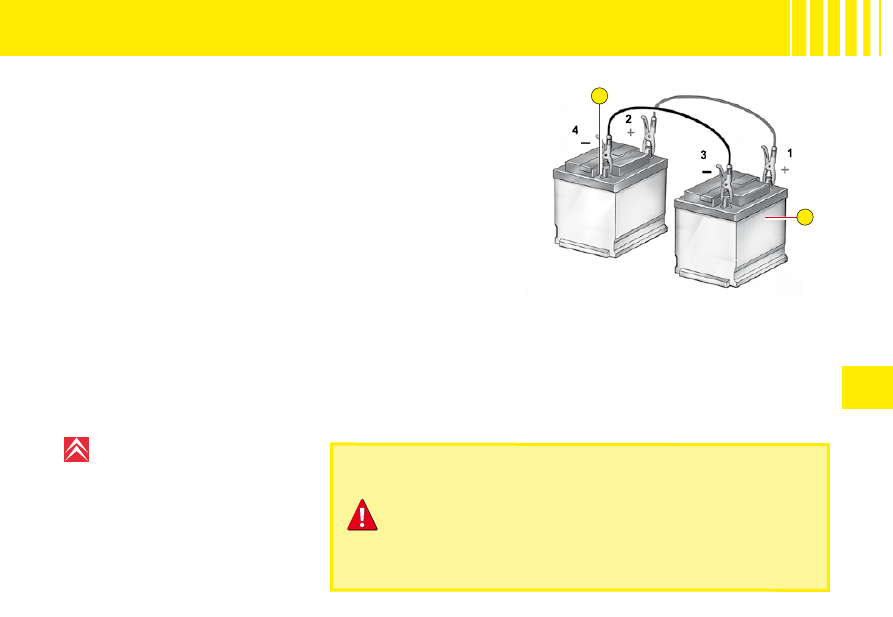Citroen C3 Pluriel (2008 year). Instruction - part 8

A
B
V
115
1 2 V B AT T E R Y
Starting the engine with an assisting battery
If the battery is discharged, it is possible to use either a separate
emergency battery or a battery on another vehicle.
A. Dischargedbattery (Under the bonnet)
B. Assisting battery
Check that the assisting battery has suffi cient voltage (12 V).
If you use the battery on another vehicle, stop the engine on the
latter. The two vehicles must not come into direct contact with each
other.
Connect the cables according to the order indicated in the diagram.
order
Check that the leads are well secured (risk of sparks).
Start the engine of the assisting vehicle. Let the engine run for
around 1 minute at a slightly accelerated idle.
Operate the starter on the vehicle being assisted.
Note: For any operation necessitating a disconnection of the bat-
tery, you must wait 3 minutes after switching the ignition off, taking
no action which will prevent the vehicle's electrical system from going to sleep (such as operating the doors and
tailgate, pressing the buttons on the remote control, etc.).
Never approach with a fl ame or create sparks in the vicinity
of the battery (explosive gas).
The battery contains dilute sulphuric acid which is highly
corrosive.
When handling batteries, always protect your face and
especially your eyes.
In the event of any contact with the skin, rinse immediately
with copious amounts of fresh water.
Advice
Do not touch the leads during
the operation.
Do not lean over the batteries.
Disconnect the cables in reverse
order, making sure they do not
touch together.